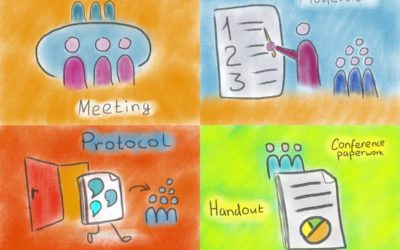blog – artiClES
In this section you will find our articles, case studies, book reviews and toolboxes.
Case Study OKR Introduction
Starting position The client in this case study was a medium-sized company that produces components for the automotive industry. One of the two managing directors learned about OKR during leadership training and was so enthusiastic that he convinced the second...
OKR – Objectives & Key Results
- an agile framework to pursue and achieve longer-term business goals In many organisations, management teams are faced with the problem of having to deal with increasingly complex structures and fast-moving markets. Working with OKR offers a way to reduce complexity...
Motivation
"You can only set off the fire (of enthusiasm) in others if you are burning with confidence." Augustine What motivates our employees and us?Food for thought about motivation When someone asks me for help or advice, I am happy to help. When someone needs...
Appreciation – a crucial factor for motivation
Wikipedia says: "Appreciation refers to the positive evaluation of another person. It is based on an inner general attitude towards others. ... It tends to be independent of deeds or performance, even if these influence the subjective assessment of a person and...
How online settings are changing the requirements for meeting facilitation
The number of online meetings has increased dramatically in the last two years. Of course, we are noticing this ourselves. The number of remote events currently accounts for more than 50% of our working time. During this time, we have adapted our way of working for...
Book review – Ambidextrous guidance
In times of digital transformation, managers of today and tomorrow have too much in their hands. Therefore they will almost not manage to act with two hands. Leaders are confronted with agility and design thinking on the one hand, and clear structures, hierarchies and...
Toolbox – Ambidextry
Take a white sheet of paper and a pen and write a few sentences. If you are right-handed, first write a few sentences with your right hand, then the same sentences with your left - or vice versa. Try it for a few minutes.Reflect briefly:How did you feel about this...
Ambidextry in organisation and leadership
Ambidextry - what is it? Opposites attract, they say, but they are only a fragile structure if they lack connecting elements. Ambidextry - the term used in biology for ambidexterity - creates the balancing act - between old and new - between preserving and changing....
Ambidextry in Leadership – Case Study
In this article, I tell the story of a very visionary CEO who developed an exciting "ambidextrous" concept for a specialist publisher back in the late 90s and "pulled it off", at least for as long as he worked at the company. Unfortunately, the experiment failed. The...
When negotiations threaten to fail
Strategies for difficult negotiating situations Negotiations can sometimes reach a point where frustration sets in, and it seems as if all the effort was in vain. For days, maybe even weeks, one has discussed with a negotiating partner, tried to understand, searched...
Change Management
In the first article of the series around the topic of change, we looked at "Continuous Change Processes". https://www.coverdale.at/en/continuous-improvement-process-cip/ In this article, we will focus on the topic of "classic Change Management". Definition of...
Conflict as an opportunity
From April to December 2020, the Institute for Conflict Research and Preventive Counselling at the Rheinische Fachhochschule Cologne surveyed companies about conflicts during the Corona crisis. While at the beginning of the crisis, many things had to be rethought and...













Recent Comments